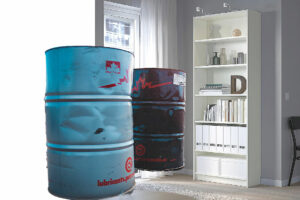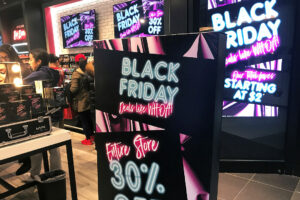OPEC+ is trapped in an inflation storm of its making

TO UNDERSTAND the predicament OPEC+ is facing, start with a visit to an Ikea store.
A decade ago, if the Swedish furniture giant had accepted crude as payment, the oil cartel could have outfitted a good portion of the conference room where its ministers will be gathering on June 4 in Vienna — their first face-to-face meeting since the pandemic started — with a single barrel. Today, it wouldn’t even buy a humble bookcase.
It’s not just that oil prices have fallen 25% since late last year to $75 a barrel, but that relative to the price of manufactured goods oil is even cheaper.
In the global race against inflation, the cartel is losing. Perhaps it’s a case of poetic justice. After all, OPEC+ was a co-conspirator in making everything more expensive. But now, the group, led by Saudi Arabia and Russia, is finding that the purchasing power of a barrel of oil isn’t keeping up with global prices. I’m tempted to reach out for the Biblical quote: “For they have sown the wind, and they shall reap the whirlwind.”
Typically, commodity producers battle a treadmill that’s known as the Prebisch-Singer hypothesis, for the two development economists who proposed it in the 1950s. In simple terms, it says that over the long-term, the price of primary goods, such as commodities, falls relative to the price of manufactured goods. No matter how high producers raise prices, the cost of everything else eventually climbs faster. That’s why Raul Prebisch and Hans Singer argued that commodity-producing countries must diversify their economies, industrializing if they wanted a healthier future.
True, over shorter periods, the price of commodities can outstrip manufactured goods, improving the terms of trade of resource-rich nations. For much of the early 2000s, that’s precisely what happened. In 2010, Glenn Stevens, then the governor of the Reserve Bank of Australia, used a graphic metaphor to illustrate the point — and why Australia, rich in minerals, natural gas and grains, was benefiting.
“Five years ago, a shipload of iron ore was worth about the same as about 2,200 flatscreen television sets. Today it is worth roughly 22,000 flatscreen television sets,” he said.
Stevens was speaking at the peak of the commodities super-cycle, when the cost of iron ore, oil, copper, and other natural resources jumped thanks to the voracious demand of China. More recently, the terms of trade have changed dramatically: Commodity prices are still high by historical terms, but they aren’t keeping up with global inflation.
Rather than using flatscreen televisions as a benchmark, whose price goes up and down depending on evolving technology, I prefer a different yardstick: IKEA’s “Billy” bookcase. In production since 1979, the spartan shelving unit is everywhere — and thanks to the IKEA Museum, which maintains an online collection of yearly catalogues, its price can be traced back 44 years.*
Oil in Billys per barrel gives a rough measure of the purchasing power of the barrel. At its peak, in 2012, a single barrel of oil bought two bookcases. Today, it doesn’t pay even for one. At the IKEA till, oil is back to the level it was in 2005. To reclaim the buying heft it enjoyed a decade ago, the cartel would need to lift the annual average price of oil to about $155 a barrel. Put in IKEA terms, that’s about two Billys per barrel. Back in 2013, when oil averaged about $108 a barrel, a Billy cost 395 Swedish krona, according to the company’s catalogue. Today, it costs almost double that: 799 krona.
For OPEC+ nations, which import most of their manufactured goods, inflation has become a major issue. When adjusted by inflation, the $75-a-barrel oil of 2023 has the same purchasing power as the $55-a-barrel a decade ago. Back then, nominal oil prices were above $100 a barrel.
To be sure, OPEC+ isn’t the only reason inflation is elevated. Perhaps it isn’t even the biggest reason. Perhaps it was Western central banks’ dawdling before raising interest rates; or the impact of COVID-19 messing with global supply chains, or the Russian invasion of Ukraine, together with US-European sanctions, which all contributed to boost prices even more.
Yet, OPEC+ is racing on a speedy treadmill. The period between 2000 and 2020 saw OPEC+ winning purchasing power. The next decade may be the opposite. As the US Federal Reserve has found, inflation is a complex and determined nemesis. n
*The IKEA “Billy” bookcase has barely changed in more than four decades. For this column, we chose the most typical model: an 80x202x28 centimeters white bookcase. Between 1979 and 1988 the bookcase was a tiny bit wider, measuring 90x202x28 centimeters. Prices were retrieved from historical Sweden catalogues, denominated in krona. Oil prices reflect the cost of Arab Light, on an annual average, and expressed also in krona, using the annual exchange rate between the US dollar and the Swedish currency for any given year.
BLOOMBERG OPINION




